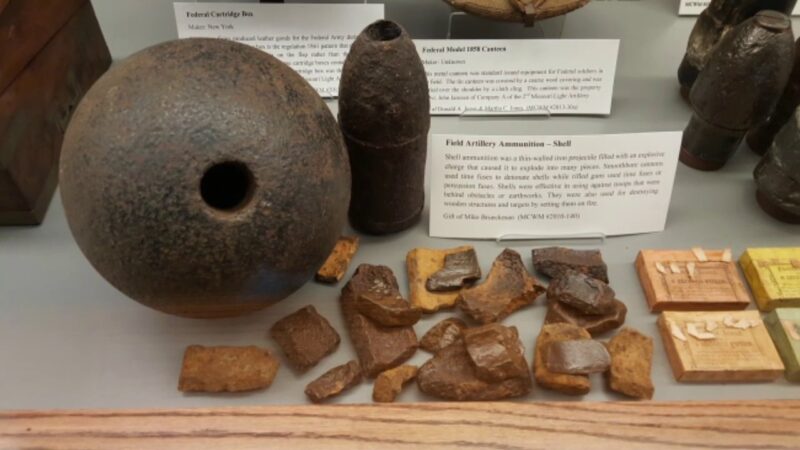History lives on at the Missouri Civil War Museum (MCWM). From Ulysses S. Grant and William T. Sherman to Jesse James and “Bloody” Bill Anderson, Missouri’s unique and colorful Civil War story is brought to light at the MCWM.
Missouri was the site of more than 1,100 Civil War battles and skirmishes, ranking third behind only Virginia and Tennessee. Missouri had both Union and Confederate governments during the Civil War. The state was also home to Confederate guerillas such as Frank and Jesse James and the Younger brothers whose names would become known worldwide for their post-war exploits.
The MCWM organization is restoring the 1905 Post Exchange Building at the Jefferson Barracks Historic Site in St. Louis County to turn it into a museum dedicated to Missouri’s Civil War history. Nine years in the making, the restoration of the 16,000 square-foot museum building is nearly complete. The MCWM is scheduled to open on April 12, 2011, the 150th anniversary of the Civil War.
The MCWM has hundreds of artifacts in its collection as well as thousands of books, photographs, documents, etc. The collection includes guns, swords, flags, uniforms, cannonballs and bullets, Civil War stamps and currency, musical instruments, medical kits, a pair of parlor chairs owned by Mary Todd Lincoln, a horse wagon, horse saddles, and equipment, and hundreds of other artifacts.
Galleries will cover the period leading up to the Civil War, each year of the war, and the post-war reconstruction era. There will also be galleries focusing on Civil War Medicine, Jefferson Barracks History, and a special display on the Civil War in Popular Culture, which will feature the Civil War in film and literature.
The Jefferson Barracks military base was established in 1826. The U.S. Army occupied this area on July 8th as the “Infantry School of Practice.” On October 23rd, the base was named “Jefferson Barracks” in honor of former President Thomas Jefferson who died on July 4th of 1826. Jefferson Barracks is the oldest active military installation west of the Mississippi River in the U.S. and it is also one of the largest national cemeteries in the country. There are 16,000 Civil War veterans buried at Jefferson Barracks National Cemetery. Soldiers from Jefferson Barracks have participated in virtually every military conflict in American history from the Black Hawk War of 1832 to the current hostilities in Iraq and Afghanistan.
Some 220 Civil War generals served at Jefferson Barracks at various points during their careers before the war. Future Union generals included Ulysses S. Grant, William T. Sherman, John C. Fremont, Winfield Scott Hancock, George B. McClellan, Phillip Sheridan, and Nathaniel Lyon. Future Confederate generals included Robert E. Lee, James Longstreet, J.E.B. Stuart, Braxton Bragg, Joseph E. Johnston, George Pickett, and William J. Hardee.
Its strategic location along railroad lines and the Mississippi River made Jefferson Barracks an ideal military base and hospital complex. Although Jefferson Barracks served as a Federal supply depot and training base during the Civil War, its primary role was that of a hospital. The MCWM building is on the National Registry of Historic Places as part of the Jefferson Barracks Historic Site and it actually sits upon the grounds where hospital buildings were located during the Civil War.
The MCWM organization was incorporated in 2002 as a 501(c)(3) not-for-profit educational institution to save the 1905 Post Exchange Building and establish a new museum and library dedicated to Missouri’s role in the American Civil War. After the museum is finished, a 6,000 square-foot Civil War research library is planned for the 1918 Post Exchange Building next door.
Missouri Civil War Museum
222. Worth Rd.
St. Louis, Missouri 63125
Phone: 314-845-1861






